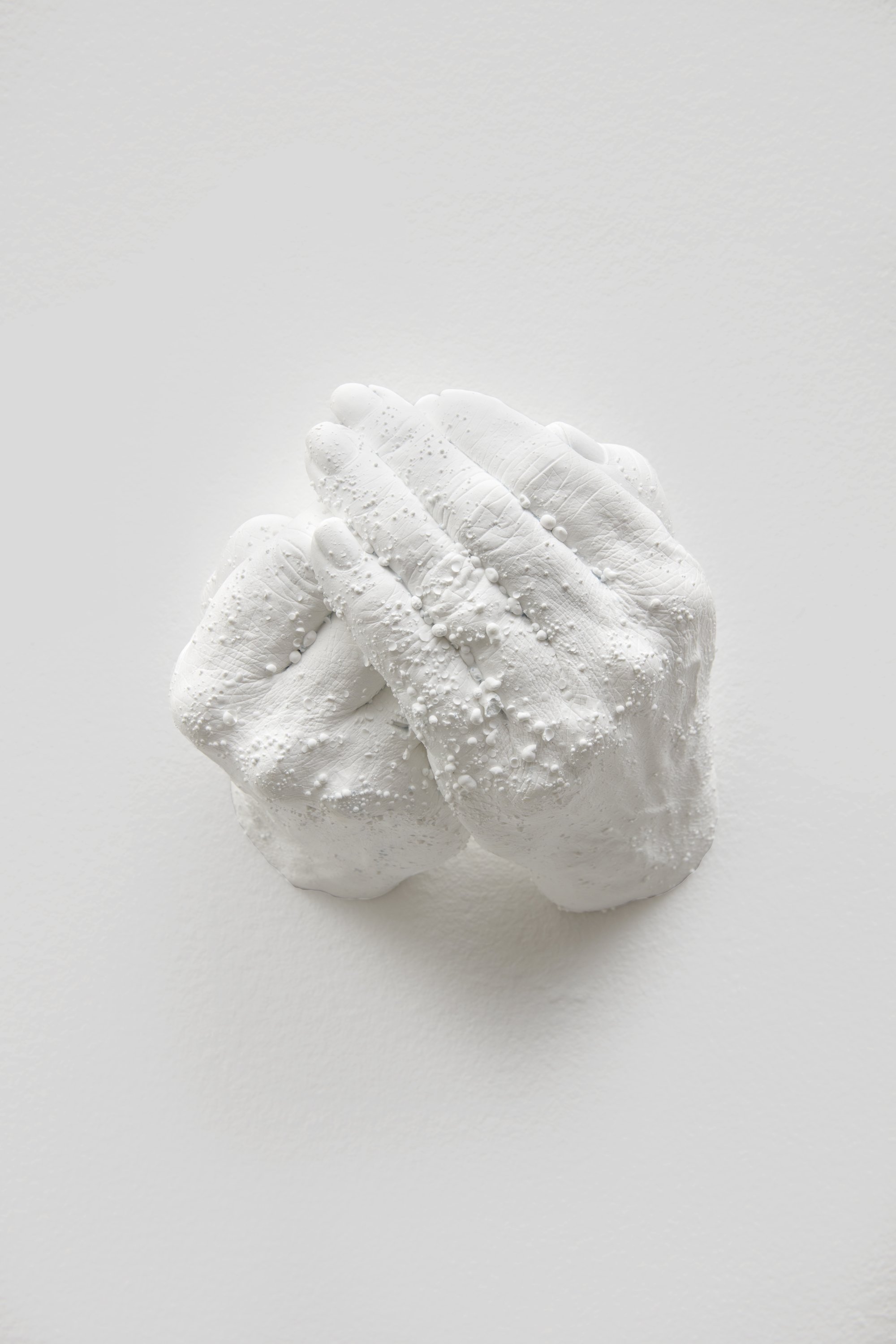CELESTINE
In Celestine, Hamilton retrains her lens from the earth to the sky, imagining the rich landscapes that permeate her visual language in the vertical, extending not from sea to sea, but from soil to stars. Across new painting, sculpture, and film, Hamilton reinterprets the evocative visual motifs found throughout her practice, building upon her ever-evolving examination of place—and the untold stories of those places. Reimagining her embellished antique fencing masks in bronze, Hamilton frees them of their attachment to the wall, extending their vertical axis and adorning them with provocative symbols: flowers, antlers, and grapes.
Undulating serpent ouroboroses—a motif Hamilton has previously employed in the form of alligators—frame a mirror in which the viewer can see themself, a subtle inversion of the way the nearby fencing masks obscure the face. Into the glass of the mirror, the artist has etched “BRILLIANT SKY,” a phrase borrowed from a painting by Mary Ann Carroll, the only woman among the group of late 20th century African American traveling landscape painters known as the Florida Highwaymen. Radiant and elusive, the stacked, repeated inscription sends the viewer’s gaze skyward. For a new series of small-scale sculptures, Hamilton cast the hands of the family and friends in white plaster with a ghostly, haint blue undertone. The gestures—a combination of prayer and figa, a symbol of divine protection throughout the African Diaspora—offer a direct link to the celestial.
A suite of paintings and a new film bring the sky directly into the gallery. The trancelike, time-lapse film—titled Celestine (Florida Storm)—captures the sky over North Florida. A recording of Florida Storm, a 1928 hymn written by Judge Jackson in response to the Great Miami Hurricane of 1926—a text which has informed Hamilton’s work for years—plays on a loop underneath the astrophotography on screen. The meditative lyrics—performed in a rich, sultry voice by Florida native Candice Hoyes—provides the soundtrack to the moon and stars and clouds and treetops. With three large-scale paintings—an evolution of the artist’s Yard Sign works on canvas—Hamilton imagines vast, swirling skyscapes, the gestural nature of the paint application allowing stars to twinkle. Painting in oil, Hamilton subtly references the brutal history of turpentine production—a harsh industry that kept primarily Black laborers across the Southeast in debt for decades. Together, the film and paintings serve as a reminder that the sky—that the heavens, the weather, and everything in between—contains past, present, and future, unfolding ceaselessly above the land we inhabit.
Hamilton’s practice has always been deeply connected to place—the artist was born in Kentucky, raised in Florida, and spent time on her maternal family’s homestead in western Tennessee. Throughout Hamilton’s work, the topography of the land itself—the soil, the foliage, the water—has been a primary protagonist, even as mythic figures appear throughout. At the heart of Hamilton’s connection to the Earth is an ever-present tension, between the magnificent, mythic power of the natural world and the violence inherent to the landscape, both natural and man-made. With Celestine, Hamilton draws her focus to the sky above—to hurricanes and heavenly beings and the remarkable beauty of the cosmos itself, heightening this ongoing tension. By bringing the celestial to the fore, Hamilton allows for new narratives to emerge, for the personal to take on a new element of the mythical.
CELESTINE is on view at Marianne Boesky Gallery (New York, NY) from January 30 - March 8, 2025. For more information, visit the A Romance of Paradise exhibition page.















